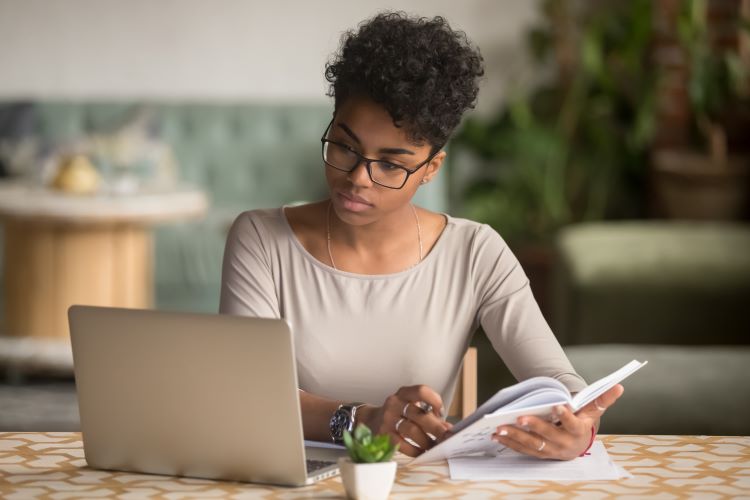Top Nursing Trends in 2022

The health care landscape has taken many turns in the last decade, but the nursing shortage and COVID-19 are two factors with the biggest impact on nursing trends. Nurses are seeking new opportunities, advancing their education, and growing as entrepreneurs, educators, leaders and primary care providers. At the moment, they are in an excellent position meet the evolving needs of the nation.
The Nursing Shortage and 2022 Nursing Trends
Experts predicted the 2020 nursing shortage long before the COVID-19 crisis began. However, it is impossible to discuss nursing trends without recognizing the pandemic’s impact on the profession. Many nurses are leaving the bedside, which has widened the gap between anticipated shortages and current needs.
The pandemic has created an obvious demand for medical care provided by nurses. Many point to this as the cause of burnout, early retirements and career changes. An aging population with complex medical needs, fewer inpatient beds, and an increased need for home health care are putting pressure on an already burdened nursing workforce. Additionally, nursing shortages can be linked to:
- A lower number of nurse educators
- A lack of availability in nursing programs
- Greater nursing shortages in rural areas
- High incentive offers for traveling nurses

How COVID-19 Has Impacted Nursing Trends in 2022
COVID-19 has affected nursing trends in many unforeseen ways. While nursing shortages and an aging baby-boomer population were a concern before 2020, the last two years have placed an additional strain on the nursing profession. This has sparked a series of shifts and innovations in healthcare to ensure that communities are adequately cared for.
While most of the health care landscape is adjusting to this new climate, nursing roles are particularly evolving to meet patient needs in various ways. Read on for the top anticipated 2022 nursing trends.
New Care Models
With nursing shortages abound, care models are likely to change to meet health care demands on a national level. Inpatient RNs may be asked to serve in a team-based role, floating to other units as necessary to address severe staffing vacancies. By working in many areas of inpatient care settings, nurses will learn a wide range of skill sets and broaden their exposure to new experiences.
A New Workforce
With nursing shortages and health care demands on the rise, newly graduated RNs are being called upon sooner than ever before to take charge of complex patients and manage hospital units. According to a recent study, vacancies are exceeding 1.2 million. This means RNs are finding themselves in advanced roles such as charge nurses, preceptors and educators at a much faster rate.
This also translates into an opportunity for new nurses to quickly reach their career goals. Specialty units are filling vacancies without requiring the previously imposed waiting periods or level of experience. Emergency departments, intensive care, labor and delivery and neonatal intensive care units are just a few examples of inpatient settings that an RN can more readily enter after graduation.

2022 Nursing Trends for Nurse Practitioners
New graduates are not the only nurses seeing changes in their career paths. Advanced practice nurses (APRNs) such as nurse practitioners (NPs) are gaining more independence and responsibility to meet the wide range of health care needs across the country. NPs are in especially high demand. The U.S. Bureau of Labor and Statistics (BLS) anticipates a 52% growth by 2030.
Inpatient Nurse Practitioners
Hospital administrators are recognizing the value of APRNs and hiring them for inpatient settings to provide immediate support to RNs and their patients. With the widening experience gap in nursing, this model of care brings expertise to the inpatient setting and allows complex patient populations to be managed more safely.
Psychiatric Mental Health Nurse Practitioner
Another growing nursing trend in 2022 is the role of the psychiatric mental health nurse practitioner (PMHNP). COVID-19 has highlighted the shortage of providers to support the mental health needs of our communities. According to recent findings from Mental Health America (MHA), mental health disparities include:
- More than 24% of adults with mental illness had an unmet need for treatment.
- Over 60% of youth with major depression do not receive mental health treatment.
- Nearly fifty million adults experienced a mental illness in 2019.
- 15.8% of youth experienced a major depressive episode in the past year.
A PMHNP specializes in providing mental and behavioral health treatment for all ages and can help fill the national shortage of qualified mental health practitioners. According to the U.S. Department of Health and Human Services (HHS), more than 6,600+ practitioners are needed to adequately support the mental health needs of the country.
Family Nurse Practitioner
Similarly, the Association of American Medical Colleges (AAMC) expects shortages of primary care providers to fall between 17,800 and 48,000 by 2034. Family nurse practitioners (FNPs) are taking the lead, making up almost 67% of NPs nationally. With some states enacting full practice authority, FNPs can act as the primary care provider for individuals and families.

Telehealth Medicine: A Growing Nursing Trend in 2022
Telehealth medicine is one of the most exciting health care innovations accelerated by COVID-19. A growing need for virtual practice and evidence of positive outcomes has led to proposed policy changes. Proponents hope to make this necessary tool available for all patients while introducing laws to protect their privacy and expanding the practice to APRNs.
Telemedicine has enabled NPs to play a key role in providing primary and psychiatric care to communities in need. This tool helps practitioners to reach patients more easily, promote rapid interventions and improve patient outcomes. Particularly valuable for patients in remote areas, this technology allows for immediate and accurate treatment and intervention.
Nursing Trends in Higher Education
The growing complexity of patient challenges and the widening gap of health care professionals emphasizes a greater need for higher education in the nursing profession.
Nurses with advanced degrees are recognized for their critical thinking, leadership, case management and health promotion skills. Known to create a positive impact on patient outcomes, The American Association of Colleges of Nursing (AACN) finds that they are also more readily able to accommodate changes in various clinical situations.
Associate Degree Registered Nurse (ADN)
The associate degree has long been considered the stepping stone for registered nurses to enter the profession, gain experience, and continue their education. However, a new nursing trend in some settings is to hire nurses with a bachelor’s degree or higher. This approach has begun to filter out associate-degree prepared nurses at the bedside.
Baccalaureate-Prepared Registered Nurses (BSN)
Evidence supports the theory that baccalaureate-prepared registered nurses (BSNs) have a positive impacts on patient outcomes. These nurses are reportedly more knowledgeable of key quality and safety aspects than associate degree nurses. Additionally, mortality rates decrease with a higher BSN percentage of staff on hospital units.
In 2010 the Institute of Medicine recommended a national push to achieve an 80% BSN nursing workforce by 2020. Employers continue to increase the proportion of baccalaureate-prepared RNs and the AACN supports this practice. Nursing trends in 2022 are expected to include an ongoing adoption of this approach.

Advanced Practice Registered Nurses (APRN)
The growing community of APRNs include nurse practitioners, certified nurse-midwives, clinical nurse specialists and certified nurse anesthetists.
Prepared at a master’s degree level, these RNs provide a wide range of primary, acute and specialty care. APRNs can also fill some vacancies left by decreasing numbers of primary physicians and other specialty providers. As unmet health demands continue to put a strain on the health care system, the need for qualified APRNs is anticipated to increase.
Nurse Educators
According to the BLS, nursing instructors can expect job growth to reach 2.3% in the next few years. Due to a lack of educators, nursing students are scrambling for admission to schools with limited availability. As nursing trends continue to align with staffing shortages, program instructors can anticipate an increased demand for their expertise.
Doctorate of Nursing Practice (DNP) and Doctorate of Philosophy in Nursing (PhD)
AACN also strongly supports the education of APRNs at the doctoral degree level, whether that is with a DNP or PhD. The doctorate curriculum builds on a traditional master’s program, providing a nurse with the necessary education to meet the increased complexity of patient care today. Research is critical for the progression of health care and the need for PhD and DNP prepared nurses is growing to fill faculty educator gaps.
How Nursing Trends in 2022 Influence Nursing Programs
As in-person learning opportunities were severely limited in 2020, nursing programs made the necessary adjustments to education models. With COVID-19 transmission rates skyrocketing, many students found online learning to be their preferred method. Through new technology and virtual teaching strategies, online programs became more robust than ever.

Online Learning Replacing In-Person Education
Online learning has now been shown to increase retention of information in less time, which makes this model desirable for many students and professors. Offering more flexibility than traditional programs, online education can meet nearly every need of prospective nursing students seeking all ranges of degrees.
Virtual Learning
An example of new technology in the educational realm is vSIM for Nursing. This virtual tool allows students to practice simulations of clinical scenarios in real-time. These scenarios stimulate critical thinking and hands-on learning for the student while avoiding in-person contact. The technology can also be adjusted to suit specific areas of health care and provide appropriate individual simulations for each student.
Curriculum Adjustments
According to the American Nurses Association (ANA), nursing education programs are also integrating telehealth content into their curriculum to prepare students for anticipated nursing trends in technology for the future of healthcare. APRNs, in particular, receive training on legal and regulatory considerations, patient consent and health information privacy as it relates to practicing telehealth medicine.
Other Anticipated 2022 Nursing Trends

Nursing Trends in 2022: Beyond the Bedside
Gaining popularity due to high demand and flexible working conditions, the ANA recognizes these emerging nursing trends that go beyond the bedside:
- Care coordinators
- Community health nurses
- Concierge nurses
- Geriatric home care nurses
- Informatics nurses
Entrepreneur Nursing Trends
With the health care landscape broader than ever, additional nursing trends in 2022 include nurse-driven businesses and care centers. The public is becoming more educated and seeking comprehensive care for their medical needs and nurses are taking advantage of a range of entrepreneurial ventures. Nurse Journal lists the following business trends for nurses:
- Medical spas
- Intravenous infusion centers
- Cannabis agency
- Freelance writer and content editor
- Legal nurse consultant
- Wellness coach
- Homecare agency
- Specialized care provider (such as a certified lactation counselor or labor doula)
The nurse's role has never been as widely discussed, respected and amplified as it is today. Endless opportunities are available for both entry-level nurses and those with advanced degrees.
Learn more about online nursing degree programs available at Wilkes University.




